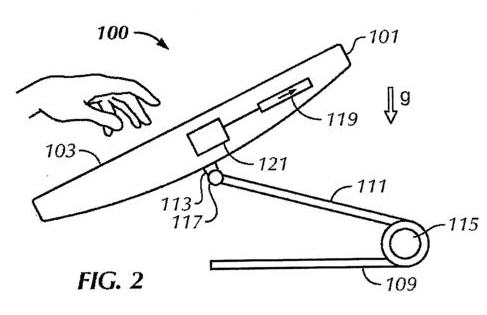Can a desktop OS ever truly be "touch ready"?

PC operating systems, or for that matter any desktop OS, don't make good platforms for touchscreen devices. The whole keyboard/mouse paradigm doesn't translate well to being used by fingers and powered by gestures. Cursors are fine motor tools that can work with pixel precision. Our fingers are big lumps of meat that cover pixels by the acre. Can these two things be ever me melded together?
Patently Apple has uncovered an Apple patent for an iMac touch system. This system switches from Mac OS X (desktop) to iOS (touch) modes depending on the screen orientation.

What's interesting here is how even Apple can't seem to solve the touch dilemma without resorting to two operating systems.
Over on Between the Lines, Larry Dignan offers the following insight:
It’s not hard to see a day where you use both the mouse and the touch user interface, but it strikes me as a bit odd that there needs to be two operating systems to pull off such a trick. Are we on to a path where we have a mobile operating system riding shotgun with more industrial ones? Picture Mac OSX with iOS. Windows with Windows Phone 7. Google’s emerging Chrome OS with Android. These dual OS pairings are nice, but the solution isn’t exactly elegant.
I agree, dual OS solutions are inelegant in the extreme. One of the biggest problems revolve around the need to have two tools (one on each OS) for each job you need to do. Then there's the problem of how to make the data accessible through both operating systems.
Note: Apple's already shown that it's not against dual OS systems - remember that this is the same company that shipped the Boot Camp tool on Mac OS X to allow users to install Windows on their Intel-based Macs.
The best solution I can think of, and one that I believe will ultimately be adopted, is a single OS featuring a fast-switch theme. One theme would be designed to be driven by a keyboard and mouse, the other fingers and gestures. It's not only the OS that would need to feature switchable themes, the software would need to switch modes too (don't believe me - think about the hassles of trying to work with something like Microsoft Word of Excel using your fingers). The web is already pretty well suited to touchscreen use, but certain elements (Flash player apps spring to mind) can still feature microscopically small controls that make touchscreen usage both frustrating and challenging.
Apple's approach here is an interesting one, but ultimately I think that it's a stop-gap until the company can come up with a more workable solution. Unless, of course, Apple is more interested in that 30% cut it gets out of app sales, and wants to spread the use of iOS in order to increase sales.